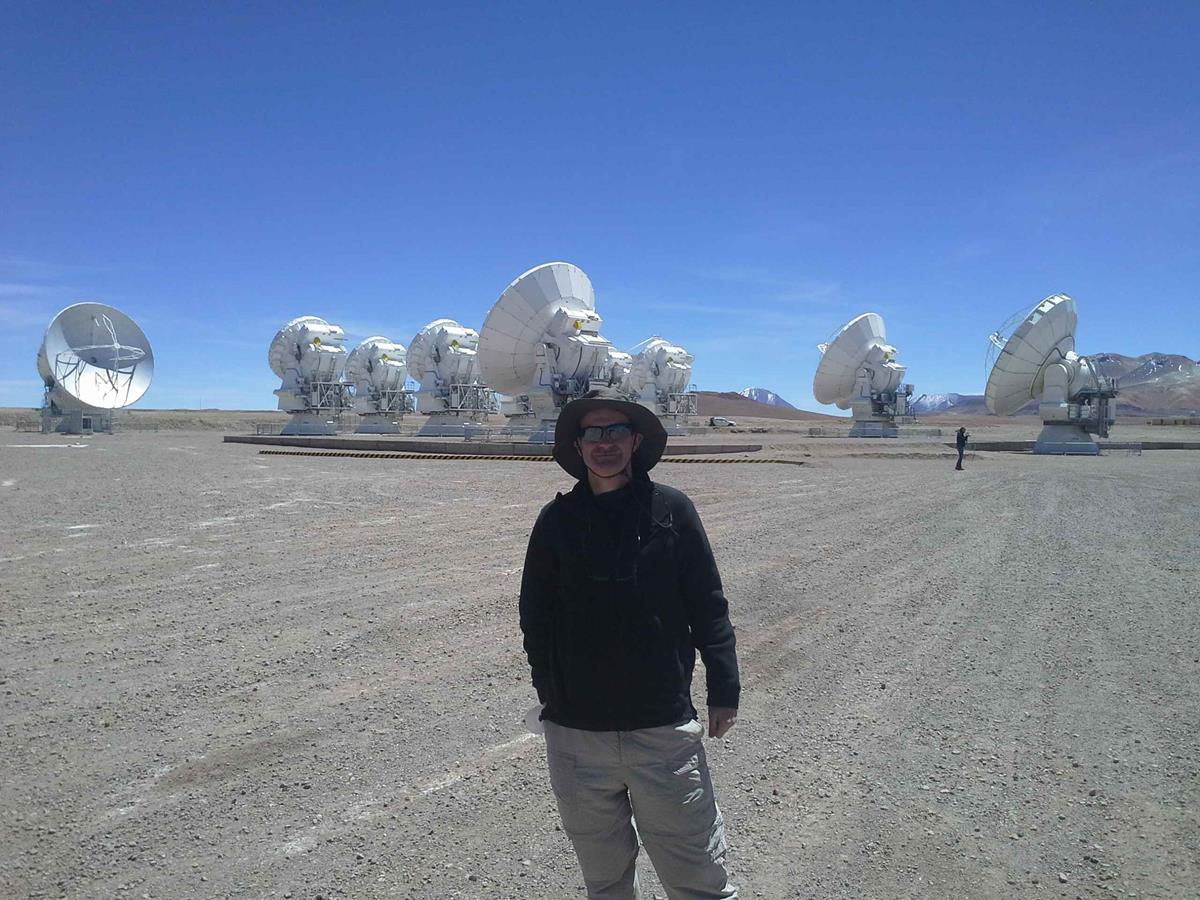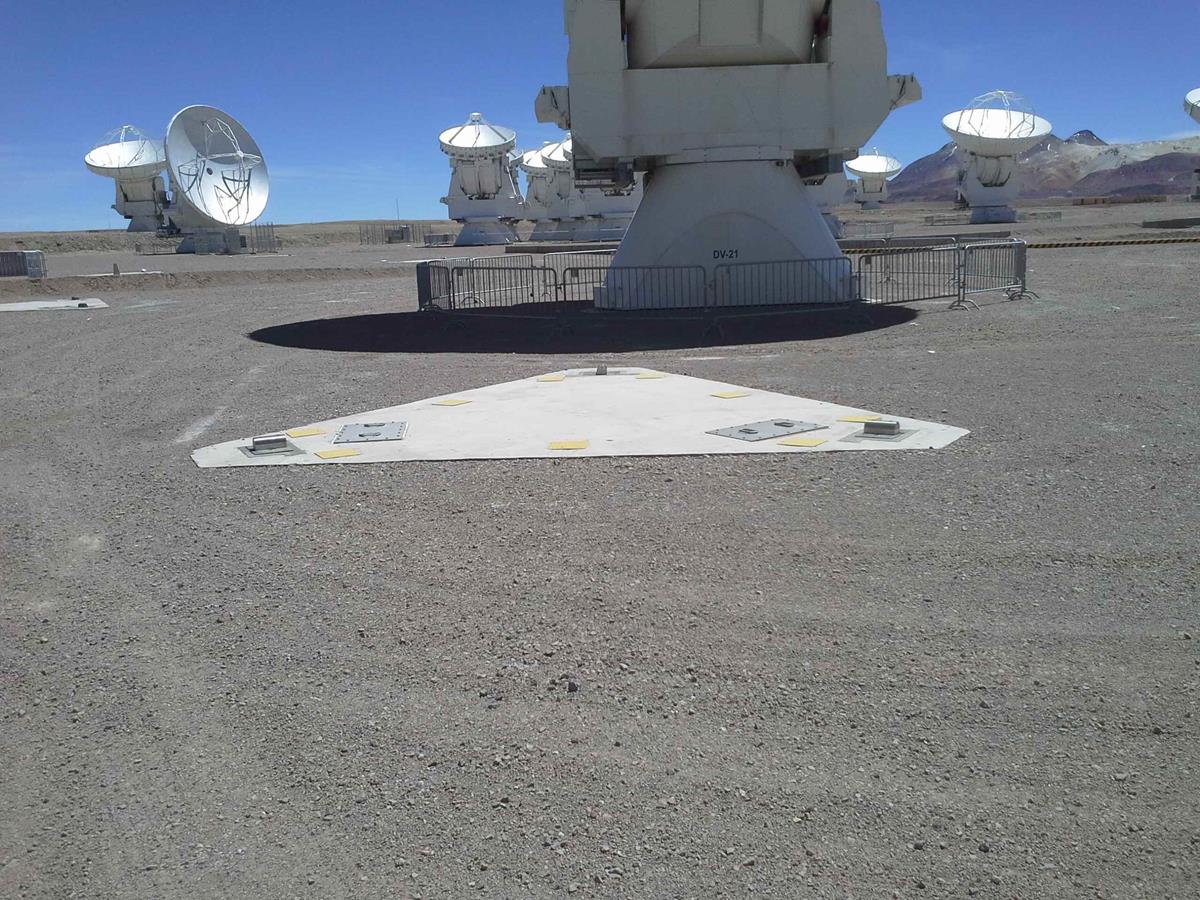ALMA Opening
Richard Wylde was privileged to be asked by ESO to the ALMA opening ceremony in the Atacama desert in
Northern Chile in early March 2013.
ALMA has nearly all of its 66 Telescopes now connected to form a very high resolution interferometric
telescope. (When you scale the 16 Km ALMA baseline using its operation wavelengths, you get a higher
angular resolution than, say, the Hubble telescope operating in the visable). The trip also took him to the
High Site where the antennas are placed - a little above 5000 Metres, where the air pressure is not much
more than half that at sea level.
Richard Wylde at the high site

Tasked with looking star and galaxy formation at high red shifts in the early Universe, as well as planetary
formation in our own galaxy, ALMA has already seen water molecules further back in time - at about 1 billion
years after the big bang, in a star nursery. As oxygen was not form in the initial fireball, this means that within
the first billion years, stars had the chance to form, live and die - thereby providing the stellar cooker to form
the oxygen needed to form H20
The interferometer requires very stable position of each antenna - and a knowledge of their phase relationships
to femto-second precision over a few minutres. This is a remarkable technical achievement. More general
and technical details can be found here at the ALMA WWW site.
Although the mounting of the telescope may not look an important matter - it is. Here is a picture of the pads
upon which each antenna sits; these must define and hold the antenna to a few micro-metres.

The ALMA mounting parts - a vital part in mantaining interferometric precision
TK and QMC Instruments have been heavily involved in the provision of components and subsystems for
each of the telescopes in ALMA. QMCI provided cryostat anti-reflection vacuum windows and filters including the solar blockers which enable the sensitive detectors - normally aimed at incredibly faint objects in the sky - to safely be used to view the sun. TK manufactured the ambient
and hot calibration targets, which calibrate out changes in receiver sensitivity. TK is also engaged in
manufacturing for NAO in Japan the higher frequency (Band 10 - 790 to 950 GHz) receiver's corrugated horns.
Not easy to make as we are finding out....